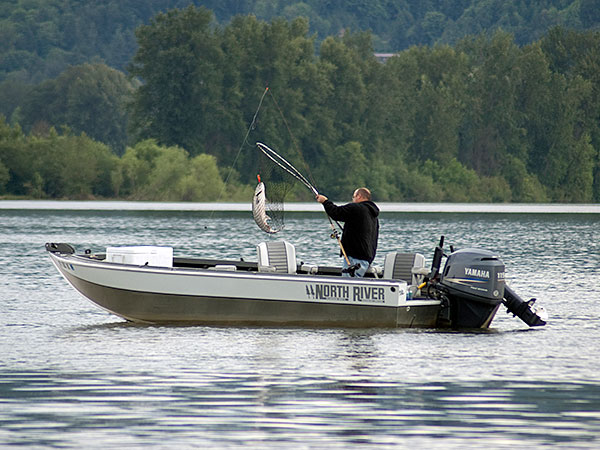Anglers in Washington can expect similar salmon fishing opportunities this year compared to 2021, with some improved opportunities in the ocean driven by strong expected coho returns, state fishery managers have announced.
The 2022-23 salmon fishing seasons, cooperatively developed by the Washington Department of Fish and Wildlife and treaty tribal co-managers, were tentatively set Tuesday afternoon at a week-long Pacific Fishery Management Council meeting held online and in-person in Seattle.
“We continue to see low returns of some stocks across Washington, especially Chinook stocks, and our first priority is to craft fisheries that conserve and aid recovery of those runs,” said WDFW Director Kelly Susewind. “At the same time, there are bright spots in this year’s forecast, and we developed what we believe are some novel ways to maximize opportunities in areas where healthy runs might mingle with those weaker stocks.”
Negotiations between WDFW and co-managers this year were guided in part by a new Puget Sound Harvest Management Plan that has been submitted to federal regulators and is expected to provide long-term fishery guidance for Puget Sound if approved.
“Now that we’ve met the challenge of providing harvest opportunities, the co-managers need to get back to the work of recovering salmon,” said Shawn Yanity, vice chair of the Northwest Indian Fisheries Commission. “Protecting treaty rights is not about fighting over the last fish. It’s about salmon recovery in the long term.”
Season recommendations now move forward for approval by the National Marine Fisheries Service and final rulemaking, including additional opportunity for public comment and consideration of those comments.
Puget Sound
Low returns of Stillaguamish Chinook are expected to continue affecting fisheries across Puget Sound. Stillaguamish and Snohomish Chinook returns will especially impact fishing in the San Juan Islands (Marine Area 7) and Admiralty Inlet (Marine Area 9). Managers have proposed a three-day hatchery Chinook and coho fishery from July 14-16 in those areas, followed by a coho-directed fishery starting Aug. 16.
“Strong catch rates and fishing pressure led to some early closures in these areas last year, and we wanted to make sure we do not exceed our catch allocations in 2022,” said Kyle Adicks, intergovernmental salmon manager with WDFW. “We heard from many anglers that they wanted an opportunity to fish in July in these areas, and this offers some opportunity while still hopefully preserving the chance to fish on what’s expected to be a solid coho run later in the summer.”
Winter Chinook fisheries will again be limited in Puget Sound in 2022-23, with some Chinook retention opportunity available in November and December in Marine Area 11 (Tacoma-Vashon Island), February and March in Marine Area 10 (Seattle-Bremerton), and March and April in Marine Area 5 (Sekiu).
Most Puget Sound marine areas will once again open for the summer season beginning in July or August, with June openers currently planned for Marine Areas 10 and 11.
Columbia River
Summer fisheries on the Columbia River are expected to be reduced compared to last year, with fishing from the Astoria-Megler bridge to Highway 395 bridge in Pasco starting June 16. The fishery below Bonneville is scheduled to be open through June 22. Sockeye retention is not allowed.
Fall fisheries from Buoy 10 to the Highway 395 bridge in Pasco is planned for an Aug. 1 opener, with different dates by area for Chinook and coho, and includes steelhead restrictions throughout the river. Another strong coho run is expected and a similar Chinook run size compared to last year should provide for some good fishing opportunities.
Ocean fisheries
Coho are expected to return in large numbers to the Washington coast in 2022, and in coastal marine areas coho quotas reflect those improved forecasts. Fishery managers agreed during this week’s PFMC meeting to recreational ocean quotas of 27,000 Chinook and 168,000 marked coho, more than double the 2021 coho quota.
LaPush (Marine Area 3) and Neah Bay (Marine Area 4) will open for salmon retention beginning June 18, followed by Ilwaco (Marine Area 1) on June 25 and Westport-Ocean Shores (Marine Area 2) on July 2. All areas are scheduled to remain open until Sept. 30 or until quotas are met, with species and size restrictions dependent on the area.

